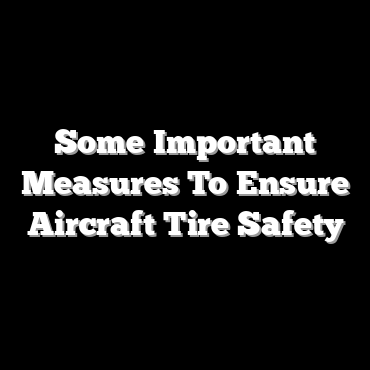While they’re black and round in color, almost all aircraft tires’ characteristics have in common with the automotive tire variants. Aircraft tires are meant for the particular job of takeoff and landing and are present on landing gears on all aircraft.
The proper servicing of these tires ensures overall aircraft tire safety, and the aircraft’s security is compromised without adequate servicing and inspection. Aircraft types should flex around three times the rate of an automotive tire in normal operation, mainly for the landings. Such aircraft flexing tires and the shock absorption of landing gear systems are based on the tire’s condition, ply/size rating, and proper inflation. Now let’s discuss the first safety tips to consider carefully.
Right Tyre Inflation
As most aircraft use natural rubber, the air held inside diffuses slowly from the rubber and escapes into the atmosphere throughout the tube’s entire life. It is normal to have such diffusion, but the tube/tire needs to be serviced and checked in a few days to replenish lost pressure.
The best way to service airplane environmentally friendly tires is using nitrogen, although dry and clean air is also usable. According to an aircraft tire manufacturer, a dry and clean atmosphere is functional as long as the oxygen content doesn’t get past 5% of the tire volume.
Tire Replacement
Aircraft owners that have at least private pilot certificates can replace the tires on their aircraft under provisions of aircraft tire safety preventive maintenance of FAR 43 Appendix A. For this purpose, it is advised to have FAA-approved data or maintenance manuals from the manufacturer, short runways, high air temperatures or more weights, using high-end tires is necessary.
Using Recapped Tires
Whether it is advisable to use recapped airplane tires or not is an age-old debate among operators and owners. Tire recaps are used tires with a new molded tread. Mostly these are used in heavy trucks. So are they perfect options?
Recapped tires are good as carcass, attention, and materials to overall quality control by re-capper. Operators make frequent landings and takeoffs, such as flight school, and recap only tires with the known history, with reliable re-cappers getting the best from the recapping practice.
Using recapped tires has been perfectly done for many years because of stringent quality protocols, inspections, and daily inflation checks.
Servicing and Operations
When you’re changing tires, make sure to use new tubes. Over time, the old line would need to be stretched to conform to old tires, and it won’t resize itself for fitting new tires, potentially leaving wrinkles or folds that eventually fail. Always use tire talc in tube/tire assembly, not the drug store talc, as other materials like perfume are added and can damage the tire/tube.
Conclusion
Even when you’re just performing aircraft tire safety maintenance on your private airplane, you would need to present approved data from the manufacturer to the FAA. The good thing is that not many manuals, documents, and other technical information are necessary for properly servicing tires. The better thing is that most things you need can be bought online. As scrap tires are the contact point between the airplane and the ground, a tire issue would be the last thing anyone would have to face, especially when landing at high speeds.
Contact Us:
US Tire Manufacturers Association
Phone: 202-682-4800
